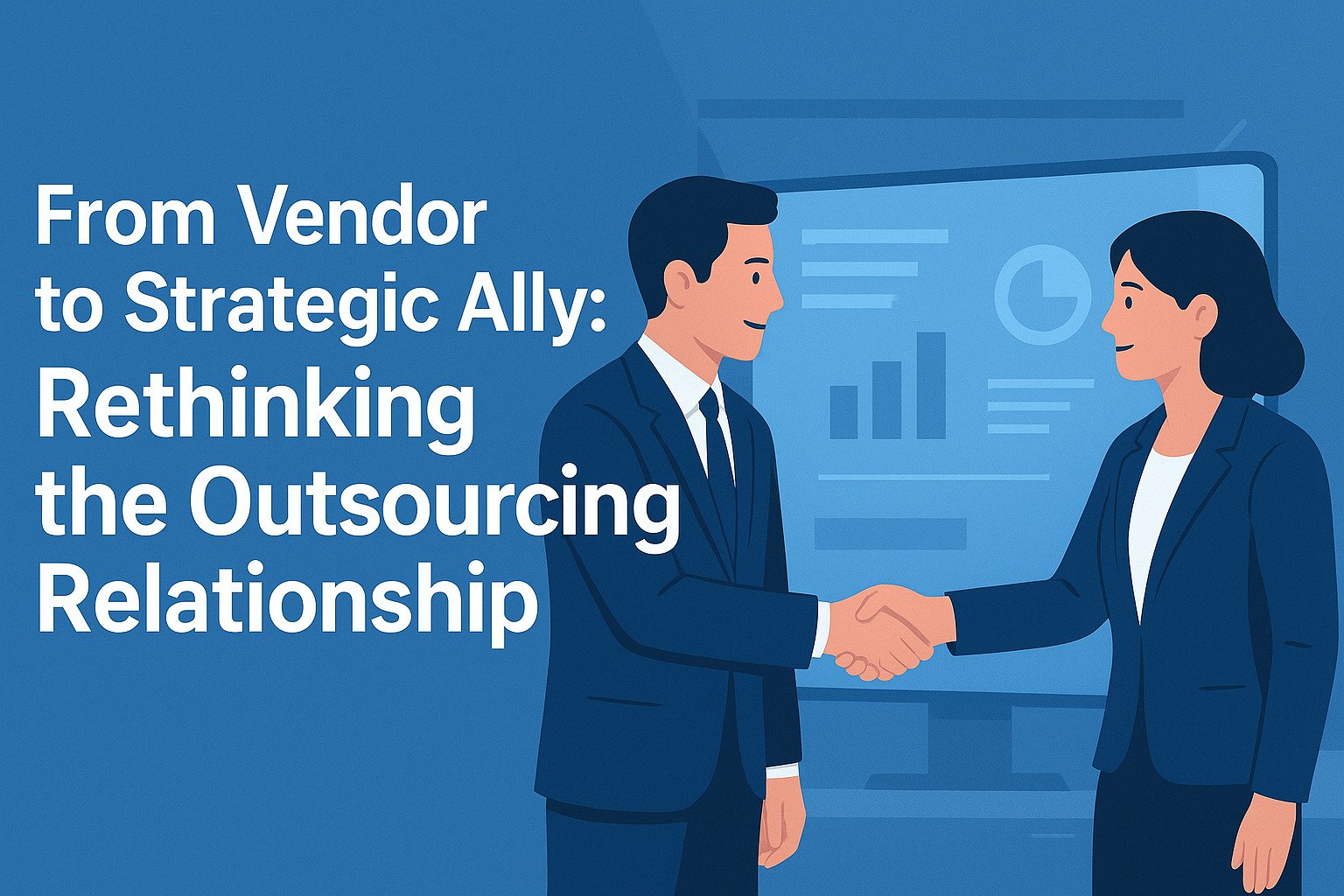From Vendor to Strategic Ally: Rethinking the Outsourcing Relationship
- 1 min read
Discover how modern outsourcing evolves from transactional vendor models to strategic partnerships that drive innovation and long-term business growth.

Introduction
In today’s competitive digital economy, outsourcing is no longer just about cutting costs, it’s about gaining strategic advantage. Businesses are shifting from transactional vendor relationships to collaborative partnerships that unlock innovation, scalability, and shared success.
This transformation redefines how companies like Euro IT Sourcing support clients, not merely as service providers, but as strategic allies driving measurable outcomes across technology delivery, cybersecurity, and operational efficiency.
Understanding this shift is crucial for organizations that want to build resilient, long-term IT ecosystems and ensure that outsourcing becomes a catalyst for growth, not just a tactical fix.
The Traditional Vendor Model: What’s Changing
Historically, outsourcing relationships were transactional, defined by cost savings, time-bound contracts, and rigid scopes. The focus was simple: deliver a service at the lowest cost possible.
However, this model often led to:
- Limited communication and misaligned expectations
- Short-term delivery focus with no strategic continuity
- Poor integration with the client’s internal teams
In the era of digital transformation, such models fail to provide the agility and innovation businesses require. According to Gartner, companies that treat outsourcing partners as strategic allies experience 30% higher project success rates compared to those maintaining purely transactional relationships.

The Rise of Strategic Outsourcing Partnerships
Modern outsourcing now emphasizes collaboration, trust, and shared value creation. Instead of “us vs. them,” it’s “we”, working together toward a unified business vision.
Key Characteristics of a Strategic Ally
- Shared Goals: Both parties align on business outcomes, not just deliverables.
- Transparency: Open communication, continuous feedback, and mutual accountability.
- Innovation Enablement: Leveraging the partner’s expertise to enhance processes, not just execute tasks.
- Technology Integration: Seamless collaboration across systems, teams, and time zones.
- Continuous Improvement: Regular evaluations and agile adjustments to optimize results.
At Euro IT Sourcing, this partnership-driven model ensures clients benefit from specialized Eastern European talent, AI-assisted development tools, and strategic scalability, all aligned with the client’s long-term goals.
How to Build a Strategic Outsourcing Relationship
1. Define Shared Objectives Early
Start by clarifying business outcomes, KPIs, and success criteria. Both parties should understand why the partnership exists beyond project delivery.
2. Establish Transparent Governance
Create clear reporting structures, performance dashboards, and communication cadences. Regular check-ins and open collaboration tools foster accountability and trust.
3. Invest in Cultural Alignment
Mutual understanding of values, working styles, and communication practices helps prevent friction, especially in nearshore and global teams.
4. Enable Co-Innovation
Empower your outsourcing partner to contribute new ideas, propose optimizations, and participate in roadmap planning. True allies don’t just follow, they co-create.
5. Focus on Long-Term Value
Shift your metrics from immediate savings to business continuity, innovation rate, and risk mitigation. Sustainable partnerships grow stronger with time.
Metrics and Outcomes
To measure the success of a strategic outsourcing relationship, companies typically track:
- Project delivery velocity (faster time-to-market by 20–40%)
- Quality improvements (reduction in post-release issues by 30%)
- Operational cost efficiency (optimized budgets through AI-assisted automation)
- Retention and engagement of outsourced team members
- Business adaptability (faster response to changing market conditions)
These metrics highlight how Euro IT Sourcing’s partnership model goes beyond service delivery, delivering tangible business outcomes through agility and aligned innovation.
Risks & Mitigations
Risk → Misaligned expectations:
Mitigation → Establish shared KPIs and quarterly alignment sessions.
Risk → Dependency on the provider:
Mitigation → Implement knowledge-sharing and documentation frameworks.
Risk → Communication breakdown:
Mitigation → Use integrated collaboration tools and cross-cultural training.
Key Takeaways
- Outsourcing is evolving from a cost-saving tactic to a growth strategy.
- Strategic partnerships drive innovation, agility, and shared accountability.
- Euro IT Sourcing empowers clients with aligned, high-performing engineering teams.
- Success depends on transparency, shared goals, and long-term collaboration.
- Organizations that embrace this model gain a competitive and operational edge in today’s digital landscape.
Author: Matt Borekci
Contact Us: Euro IT Sourcing

Nearshore vs Offshore Development: Pros, Cons, and Best Use Cases
Explore the key differences between nearshore and offshore outsourcing, their pros and cons, and how to choose the right model for your business in 2025.

Managing Remote Development Teams Effectively in 2025
Learn how to effectively manage remote development teams with actionable strategies, best practices, and the benefits of working with developers from Eastern Europe.